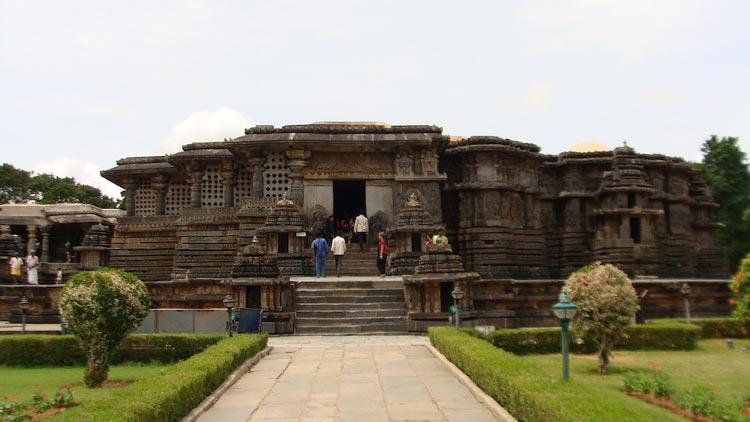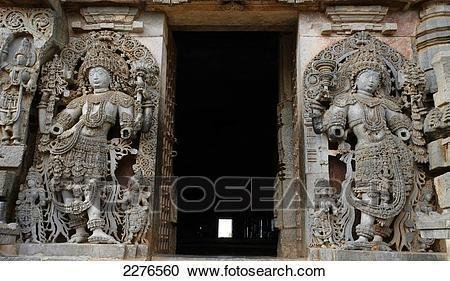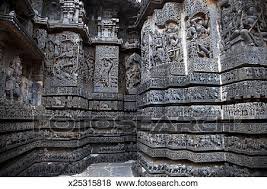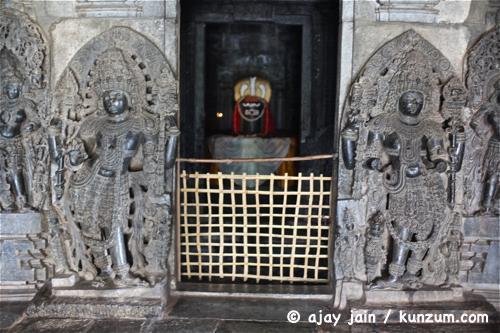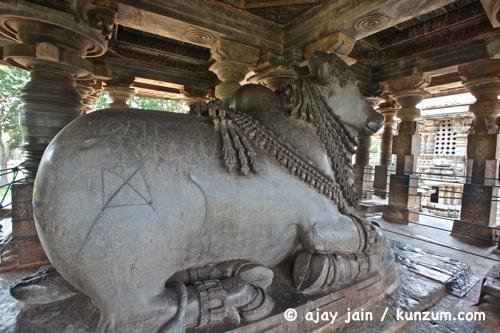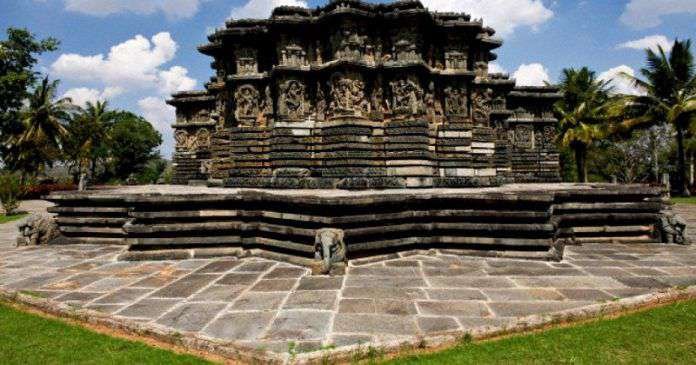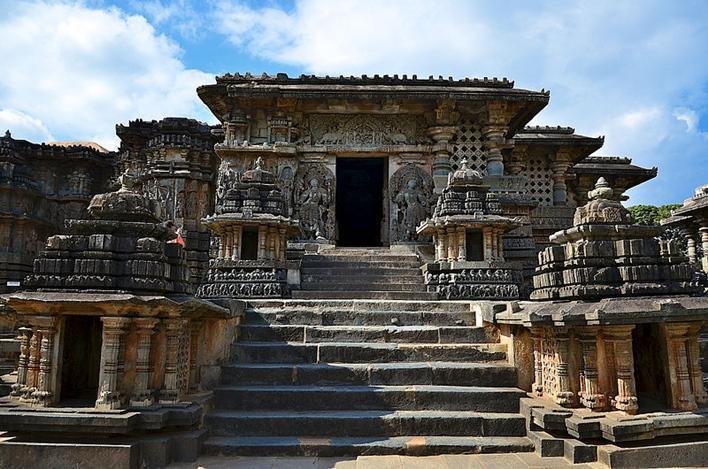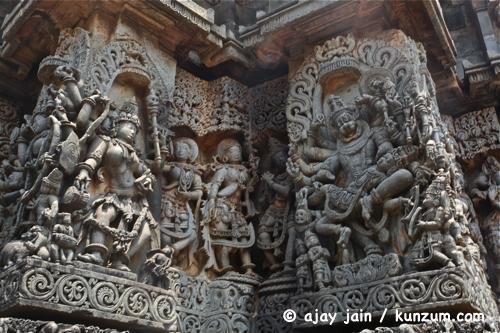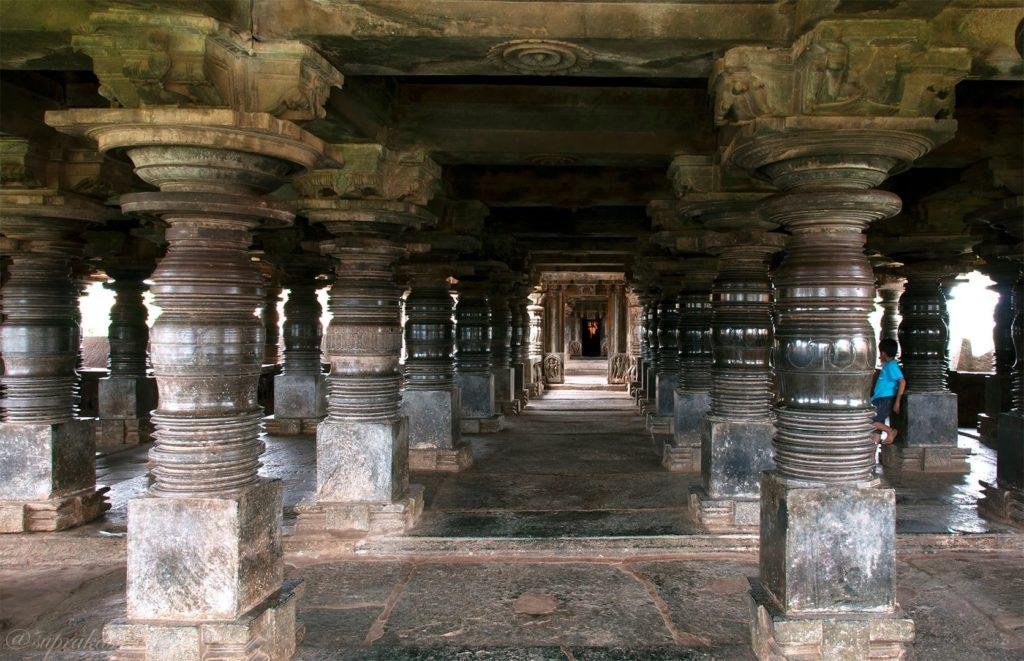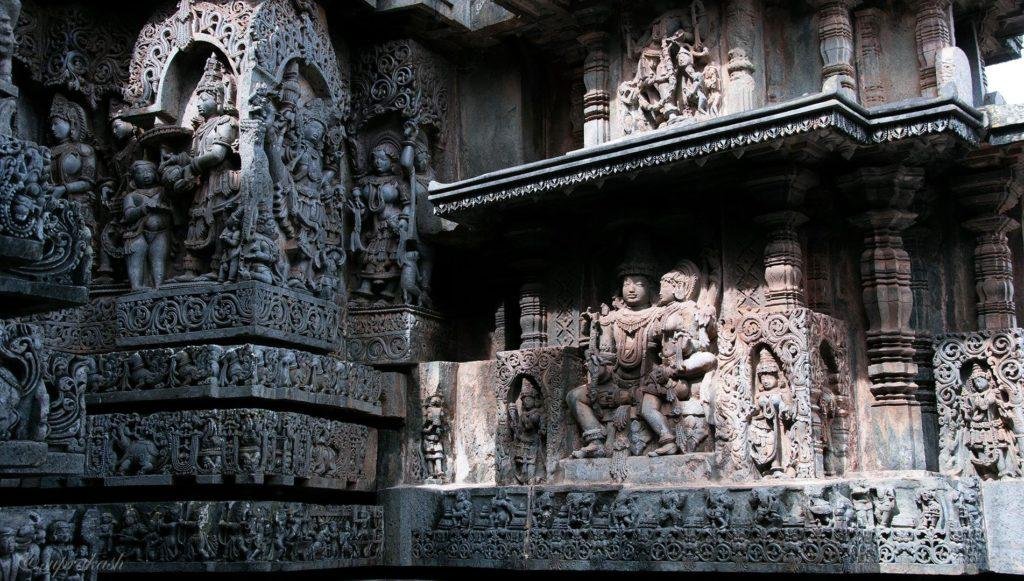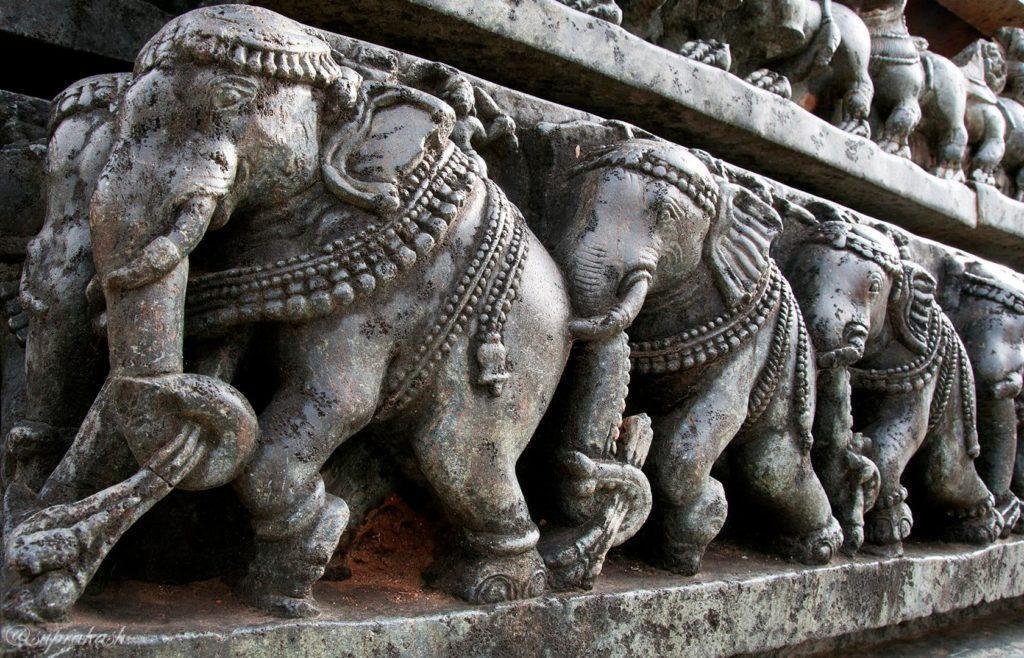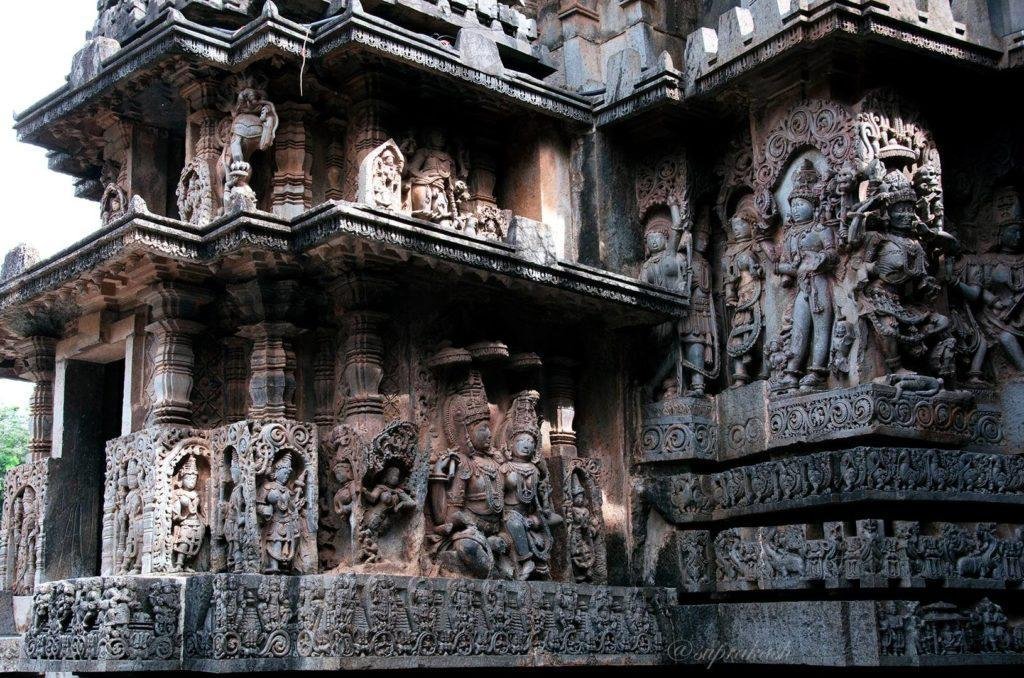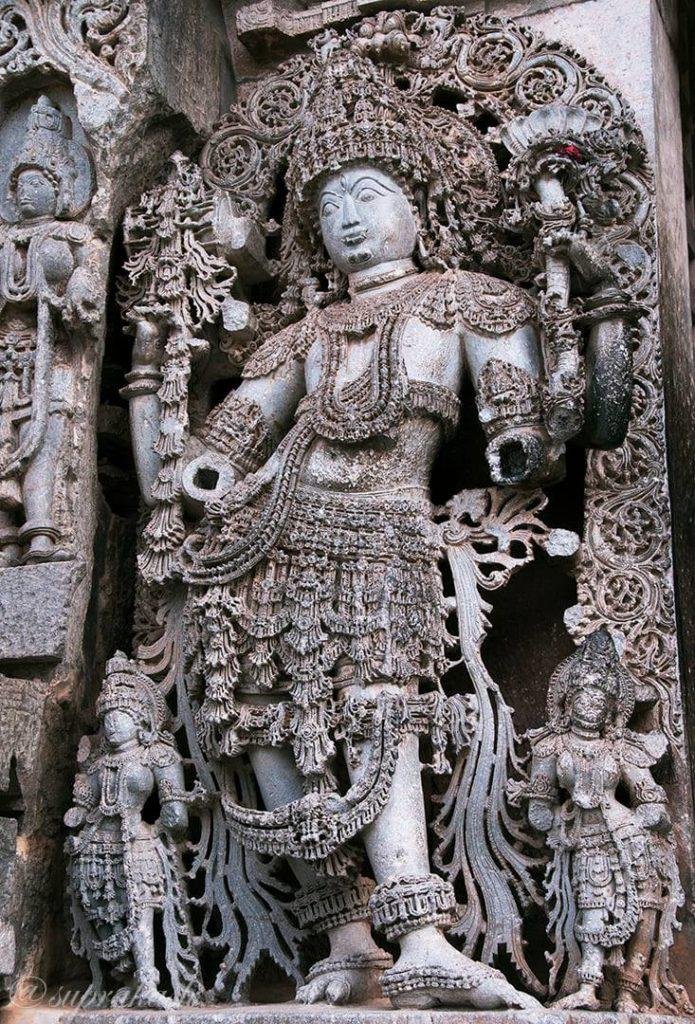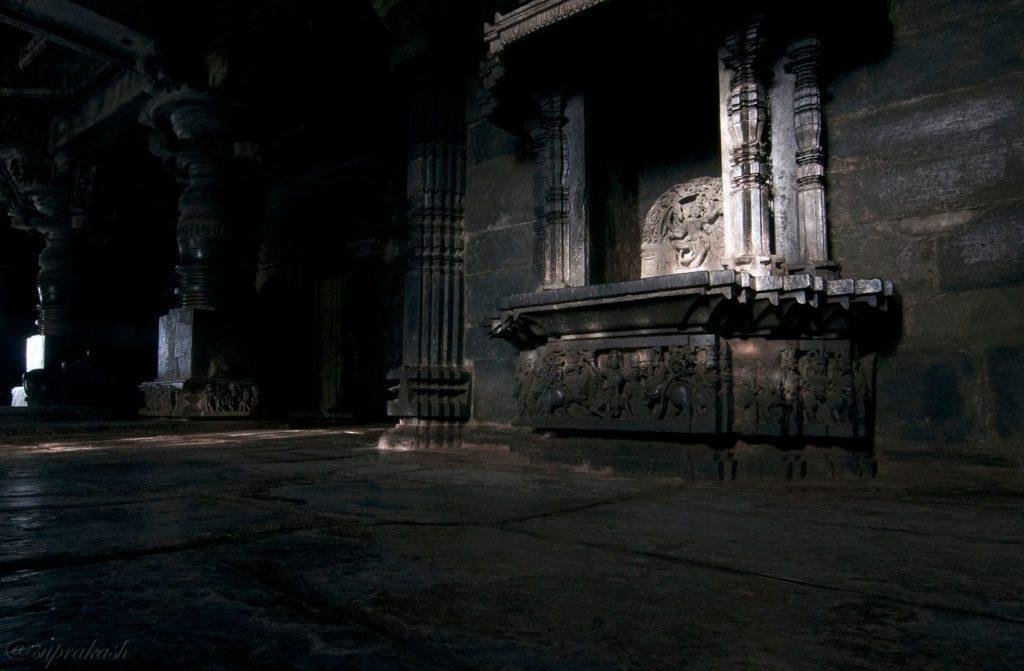Contents
Halebidu, Hassan, Karnataka
| Date built: | – |
|---|---|
| Deity: | – |
| Architectural style: | – |
| Major festivals | – |
| Locale: | – |
| District:: | Hassan |
| Address: | – |
| Phone | – |
Halebidu (IAST: Haḷēbīḍ, also Halebeedu or Halebid, literally “old capital, encampment”) is a town located in Hassan District, Karnataka, India. Halebidu (which used to be called Dorasamudra or Dwarasamudra) was the regal capital of the Hoysala Empirein the 12th century. It is home to some of the best examples of Hoysala architecture. Most notable are the ornate Hoysaleshwara and Kedareshwara temples. The city got the name “Halebidu” because it was damaged and deserted into “old capital” after being ransacked and looted twice by Islamic forces of the Delhi Sultanate in the 14th-century.
Architecture
Legend / Local stories
Halebiduis located in Hassan district in Karnataka. Ketumalla, the chief of staff of Hoysala Kingdom, built this temple during 1121 A.D and attributed to his king, Vishnuvardhana and queen, Shantala Devi. Even then it is learnt that it took 105 years to complete. If one stands on the platform of the temple and sees around he will see the hills opposite and two big bulls facing the temple and Ganeshafigure on the south.
It is believed that Queen Shantala Devi, was an epitome of beauty and fashion, she was also a great Bharatnatyam dancer and musician. Sculptors were inspired by this and the Shilabalikas, the dancing figures, are models of Queen Shantala Devi and her courtisans. History of Hoysalas mentions Shantala Devi had great influence in the adminstration and religious reforms during Vishnuvardhana reign. She was follower of Jainism and the King follower of Sri Vaishnaism and was influenced by Saint Ramanuja Charya.
In the 14th century, this glorious city fell into ruins with the invasion of Malik Kafur, Mughuls, from the North India. This place was ran-sacked and plundered repeatedly rendering it in ruins. Hence its name Haledid, meaning ” City in Ruins”.
Hoysaleswara Temple in Halebidu
Monolithic soapstone or Chloritic Schist was used for the construction of these temples.The God on the northern side temple is called as Shanthaleshwara and that on southern side is called as Hoysaleshwara.
The walls of the temple are covered with an endless depictions from Hindu mythology, animals, birds and Shilabalikas. Yet no two postures of the sculptures are similar.
Shantaleswara Temple in Halebid
Built after Shantala Devi, queen of king Vishnuvardhana. The Shantaleswara temple on the northern side stands on a platform like a casket in shining black soft stone – chlorite schist covered with variety of gods and goddesses, animals, birds and dancing girls. The temple took 190 years to build requiring skills of more than 20,000 laborers.
It has a Museum on the lawns that showcases 12th-century sculptures and gold coins in use at the time. One km from Halebid is Basti hill with Jain bastis with gleaming black stone pillars.
Also check out Basdi Halli, a group of 3 Jain temples situated very near the Hoysaleshwara temple that is famous for carved ceilings, highly polished Blackstone pillars. The Parshwanatha Swamy temple is the most important and well-preserved one. The idol is 14 feet tall and is carved out of Blackstone and bears a 7 headed serpent on its head.
Photo Gallery
How to Reach:
By Road:
- From Belur 6 km,
- From Hassan 32 km
- From Mysore 149 km
- From Bengaluru 226 Kms (4.5 hours drive)
Halebidu is well connected by road and rail to Bangalore, Mysore and Mangalore. Regular buses ply from Hassan.
- Route: NH4 to Nelamangala; NH-48 to Hassan via Kunigal,Yediyur and Channarayapatna.
- Nearest Railway: Hassan
- Nearest Airport: BIA, Bangalore
Contact Details
Official Address

